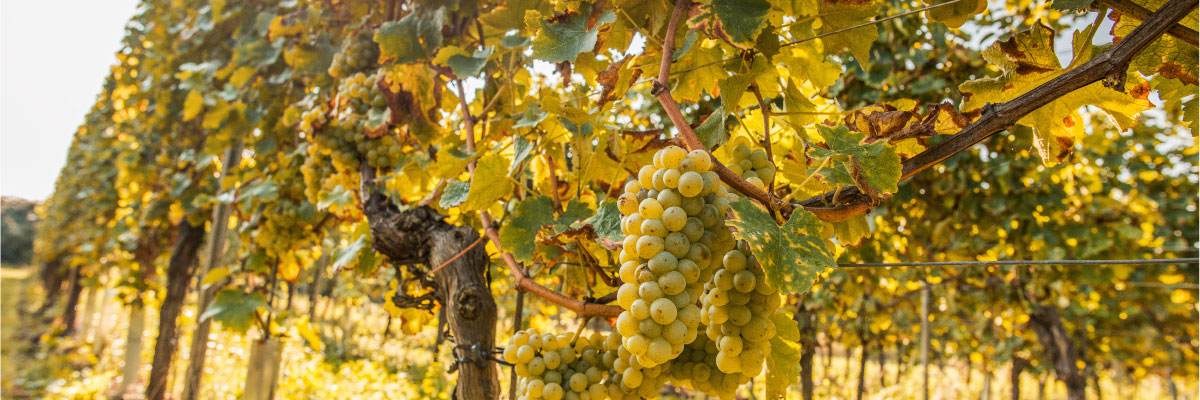Sauvignon Blanc was never really on my radar prior to moving to South Africa. When you’re making such small quantities of wine, you really want each one to stand out and be unique; which I’ve never really seen Sauvignon Blanc doing. That was until I tried my first cool-climate SB from Africa. As the kids would say, ‘it hit different’.
The word Sauvignon comes from the French word for wild: ‘sauvage’; paired with ‘vigne’ which means ‘vine’. The wild vines of Sauvignon grow with tremendous vigor and the shape of the leaves resemble that of wild grape vines.
Sauvignon originates from the Loire Valley but spread throughout Bordeaux. Here, it spontaneously crossed with Cab Franc to create Cabernet Sauvignon. This phenomenon was proven in 1996 at U.C. Davis through DNA typing and was the first proven instance of a white grape being the parent to a red grape.
The cultivar made it to California in the 1860’s. During prohibition it was grown to produce massive yields used to create sweet wines. Seeing the potential for the grape, Robert Mondavi began making dry Sauvignons. In 1968, to set these dry wines apart from the growing sweet connotation with the cultivar, Mondavi rebranded his dry wine as Fumé Blanc, paying tribute to the Pouilly Fumé Sauvignons coming out of the Loire Valley.
Cool Climate Sauvignon from Africa
So what’s going on with the Sauvignon from the southernmost tip of Africa? There are a handful of factors that make it so special down here:
Climate
You certainly wouldn’t think ‘cold’ when thinking about Africa. The Cape Agulhas Appellation is located at the very bottom of the continent. Because of this, the area is often blanketed by cold winds from the arctic. During the winter, it’s not uncommon to see snow on the peaks.
For the vines, cool-climate means slow ripening. Instead of having to harvest based on rising sugars due to a heat wave, our grapes here hang on the vines 2-4 weeks longer on average than most of the country. With this, those flavor/aroma compounds and precursors are able to form and develop optimally.
Soil
Some of the most fertile soils in Africa are found along the southernmost coast. The fynbos floral kingdom that spans the region accentuates this point. With so many different soil types to work with in a relatively small area, viticulturists have a massive canvas to work with and rarely have to compromise when planning an estate.
Further, soils in the area tend to be close to basic or just slightly acidic. This sweet spot on the pH scale is where vines are able to most efficiently take up nutrients from the soil. There is also a strong correlation between soil pH in this range and acid levels in grapes – which is one of the reasons Sauvignons from Agulhas have such incredible aging potential.
Sea
Cape Agulhas is the point where the Indian and the Atlantic oceans collide. With cool, sea breezes blanketing vines from the east and the west, grapes are constantly in contact with the salty sea air from flowering through processing. The result is a subtle minerality that has become a trademark of the region. It’s also another unique characteristic that lifts the wines up as they age – allowing for them to keep getting better as time goes on.
Sauvignon Blanc wasn’t really a wine I felt fit the #Wines4TheWild brand a year and a half ago. However, a wild Fumé Blanc from Africa fit perfectly. Bright, tropical, and full of life – it’s a wine that will be sharing the story of our first vintage for years to come.



2 comments on “Wild Sauvignon”
Nicholas
Hopefully soon I can try a bottle. Your writing has changed Dramatically since I read your mountain bike blog.
In that blog i remember you discussing your writing. Super kudos to you, it’s awesome to see such a difference.
I enjoy seeing the pictures of the landscape and the wine. Some good overviews would be awesome to see!
Hope your doing well and safe!
tderuise Post author
Thanks so much, Nicholas – means a lot. What kind of overviews would you like to see? Cheers.